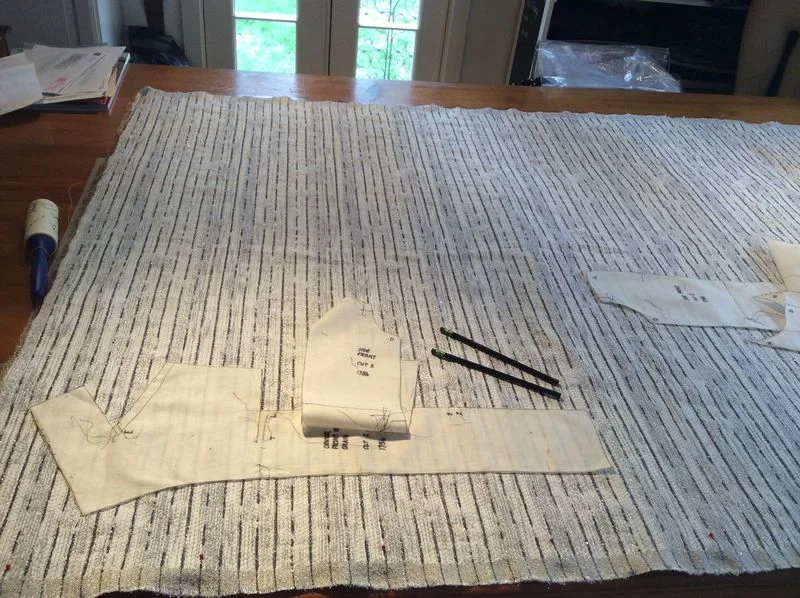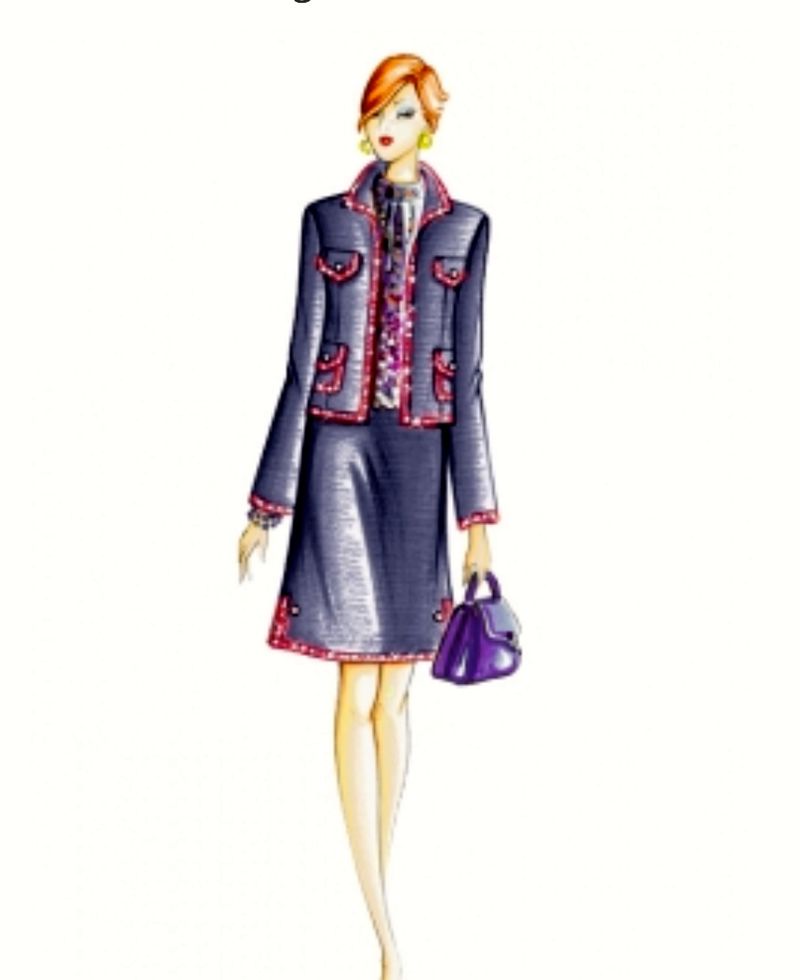Marfy sew along 1756 Pt 5 - Underlinings - when and why?
Now that you have your fashion fabric cut and your muslin pattern still firmly attached to your fabric, lets talk specifics about underlings and why we use them...
Underlining should never be confused with a lining. A lining is an independent fabric joined in certain places on the inside of a garment for a clean neat finish. It remains mostly separate from your fashion fabric
Image courtesy of Threads magazine
A underlining is joined to your fashion fabric so the two become one, it offers you a strong foundation to build on..the underlining will bring support and stability to your fabric, help control wrinkles and let you hem invisibly.
Its also perfect for marking and notching with carbon paper as nothing can be seen from the right side once the garment is completed.
Example from a previous make....carbon paper suppliers are listed here
Underlining fabric's will change from garment to garment and there are many to choose from, below are a few examples.
A silk organza brings structure and a little firmness.....
Silk - an extra layer of warmth and luxury as well as a gentle drape....
Organza's cousin batiste will bring all of organza's strength but will keep the hand of the fabric soft...
Wool or flannel will add a extra layer of warmth and softness to a jacket or coat.
WHY UNDERLINE THIS JACKET?
When you tailor a jacket or coat, you add a layer of hair canvas or fusible to the front panels...this inevitably changes, to some degree, the hand and drape of your fabric.
To compensate for this, its sometime's worth underlining the remainder of the jacket in a supporting fabric with a similar hand so the garment retains the same look and feel.
There are a couple of reasons to underline this specific jacket..... although its ultimately going to be your decision... (and this decision will change for each and every garment you make)
Some things to consider are..... if your hair canvas or fusible have made your front panels firmer or stiffer, if you are using a loose weaved fabric or if you would like your jacket to be more "jacket" and less LFJ cardigan!
Additional info below is from last years Little French Jacket sew along -
Using a organza underlining or interfacing will make the wool firmer and give it a more tailored appearance, if that's the look you are after then organza is a perfect solution. It will give the jacket body without adding weight...
If your fabric is thinner and would benefit from some extra support or if your lining is showing through the wool then a thin cotton batiste or voile is a great alternative and allows your fabric to retain its drape.
Poppykettle recently wrote about her adventures with underlining and batiste and has some great pics...
Threads magazine has a great article here
and Susan Khalje'sthoughts on underlining are below :-)
Underlining is a fabulous tool - I always think of it as making the fashion fabric what it is, but more so - it gives support from behind the scenes, and that support can be dramatic or subtle. I think it's one of the most important tools in the sewer's arsenal. It:
- lessens wrinkles
- fills out pleats and gathers
- can shift color (can make a white white, or less white, for instance)
- hides stitches (gives a layer for stitches to go onto -for a hem, for instance)
- keeps the fashion fabric from distorting or losing its shape over time
- can really alter the nature of the fashion fabric, if need be
and if you would like more info I found these articles in Threads Magazine
March 2008 No. 135 by Kenneth D. King
March 2011 No.154 by Susan Khalje
March 2013 No.165 by Louise Cutting
HOW TO CUT AN UNDERLINING
For the sake of continuity, lets say that the underlining should be placed right side down, but in all honestly it will makes little difference to most fabrics as it won't be seen..
* if you are using a crepe de chine or something with texture, you can sometimes use this to your advantage by joining the right side to the wrong side of your fashion fabric, this can help "grab" the fashion fabric and keep both tightly joined*
Line your grain lines up in exactly the same manner as your fashion fabric, and carefully place your pattern pieces (with fashion fabric still attached) onto the underlining.
Measure your pattern grain lines to the selvedge of the underlining fabric and line them up exactly...you need the grain on both pieces to be as exact as possible for the two to behave as one going forward...
and don't forget if you are using silk organza, cut off the selvedge and put it somewhere safe.....its wonderful to use for re-enforcement behind zippers and on shoulder seams as its virtually indestructible.
When your grain lines match and your pieces are all laid out, use the pins in your muslin to pin through all three layers...
and cut around the pattern leaving the same seam allowances as your fashion fabric.
Tomorrow we will be thread tracing the fashion fabric and underlining it to create a single fabric...
Any questions? Hellochallengingsew@gmail.com (envelope icon at top of page) or leave me a comment :-)





